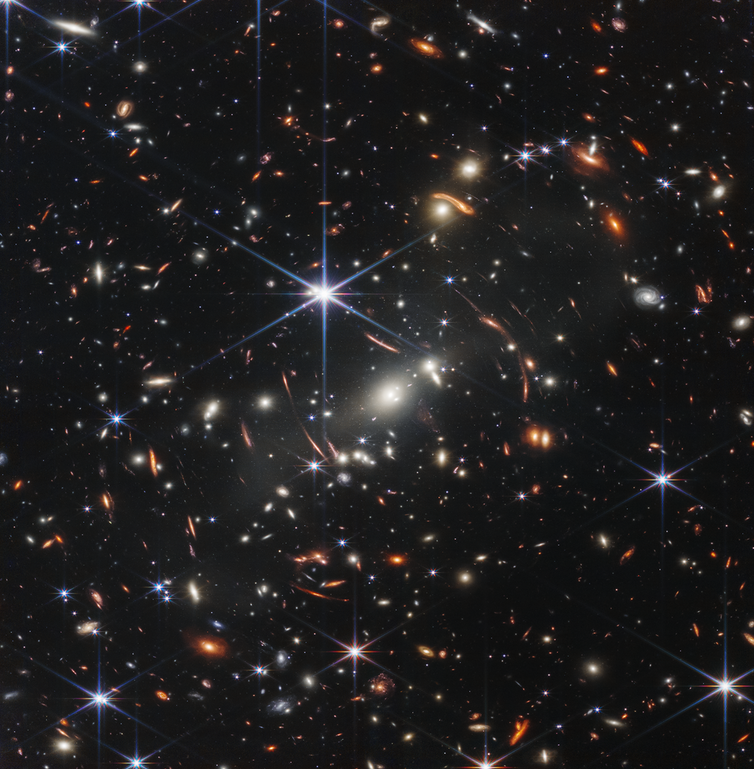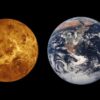The James Webb Space Telescope team has released the first science-quality images from the new telescope. In them are the oldest galaxies ever seen by human eyes, evidence of water on a planet 1,000 light-years away and incredible details showing the birth and death of stars. Webb’s purpose is to explore origins – of the universe, of galaxies, of stars and of life – and the five images released on July 12, 2022, make good on that promise.
Once the suite of instruments onboard all cooled down and were running smoothly, astronomers wasted no time in putting Webb to work. Each of the first images contains enough data to produce major scientific results on their own.
Webb was designed to collect light across the entire red to mid-infrared spectrum – wavelengths of light that are blocked by Earth’s atmosphere. And with its giant mirror and sun-shade blocking infrared emitted by the Sun, Earth and Moon, Webb can produce images of a sharpness never before achieved by any other telescope.
The buzz among professional astronomers like me has been electric since members of the Webb team shared tantalizing test images. And the real images are even better than anyone could have hoped for. During the presentation where the first images were released, Webb project scientist Jane Rigby remarked “for Webb there is no blank sky, everywhere it looks it sees distant galaxies.” Most of those galaxies were invisible until now.

This photo shows gravitational lensing and many bright galaxies, but the smaller, fainter, less distinct galaxies in this image are some of the oldest light ever detected by a human-made object.
NASA/STScI
Ancient galaxies and the early universe
The first Webb image the world saw is of a galaxy cluster known to astronomers as SMACS 0723. It lies in the southern hemisphere sky and is 5.12 billion light-years from Earth.
The detail of the thousands of individual galaxies in the image is stunning. It is like the universe in high definition, and I encourage you to look at the full resolution image and zoom in to truly appreciate the details.
The large white galaxies in the middle of the image belong to the cluster and are similar in age to the Sun and Earth. Surrounding and interspersed among the cluster galaxies are more distant galaxies, but stretched into spectacular arcs as if seen through a magnifying glass. And that is exactly what is happening. The background galaxies are much farther from Earth but appear magnified, as their light is bent toward Earth by the gravity of the much closer cluster.
In the background you can see faint red galaxies scattered like rubies across the sky. Those galaxies are even farther away. By measuring precise attributes of their light, astronomers can tell that they formed over 13 billion years ago and even determine the abundance of different elements in these early galaxies.
Webb is not only producing incredibly sharp images,…


